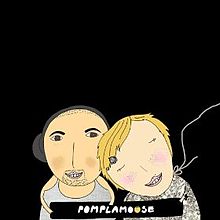[contextly_auto_sidebar id=”UGGL08WFaVocMMEMVIGcVFFUfCALT1t1″]
IF you’ve followed the debate about the post-label, post-album music world, you’ve heard the cries of the optimists: Just get in the tourbus! Even digital utopians will concede that revenues from recordings are way down, but they assure us that bands can make up the different by playing shows. It is part of a larger neoliberal gospel that says all that creative types need to do about the rigged new economy is to “adjust.”
The reality is that once you get below the level of the mainstream dinosaur acts — the Stones, Eagles, Billy Joel — and corporate behemoths like Taylor and Beyonce, things get tight very fast. The latest evidence of how difficult making money from the road can be comes from a member of Pomplamoose, a Bay Area  band with millions of YouTube hits and an enormous following, much of it from its oddball/ inventive covers of familiar songs.
band with millions of YouTube hits and an enormous following, much of it from its oddball/ inventive covers of familiar songs.
Here is Jack Conte, one of the group’s two members, on their latest tour:
Being in an indie band is running a never-ending, rewarding, scary, low-margin small business. In order to plan and execute our Fall tour, we had to prepare for months, slowly gathering risk and debt before selling a single ticket. We had to rent lights. And book hotel rooms. And rent a van. And assemble a crew. And buy road cases for our instruments. And rent a trailer. And….
All of that required an upfront investment from Nataly and me. We don’t have a label lending us “tour support.” We put those expenses right on our credit cards. $17,000 on one credit card and $7,000 on the other, to be more specific. And then we planned (or hoped) to make that back in ticket sales.
Well, the tour was enormously successful, with packed halls and adoring fan. And, the band lost money:
Add it up, and that’s $135,983 in total income for our tour. And we had$147,802 in expenses.
Conte concludes that it’s still worth it, and that there are ways — some of them new — for bands to make money. But please, when a group with this kind of following cannot even break even on a monthlong, 23-city tour, please stop telling us that all a band has to do is hit the road.
His whole piece — here — is worth a read, especially for musicians.

Was the world before the post-label/album era any better? Most made as little from recordings as they do now from touring. For the mass media to exist, all power, exposure, and income must be aggregated at the top. Winner takes all.
What if each state passed an excise tax on mass media (TV, national radio, major label recordings, movies, etc.,) and used the money to fund local arts? This might require new legislation about interstate trade, and of course, the plutocracy would fight it to the death.
The conversation around this Pomplamoose article suffers from the classic confusion around rock and pop processes. Pomplamoose is not a rock band. A rock band does not need to hire additional musicians to put on an acceptably “crazy rock show.” I’m working from the Joe Carducci Rock and the Pop Narcotic model here.
To be clear — I’m not trying to frame this in terms of rock=good pop=bad. But there is a big difference between the economics of being an indie pop rock band and an indie pop act. There is little historical precedent for trying to be a touring indie pop act. Black Flag : Fleetwood Mac :: ??? : Captain and Tennille. Maybe I’m forgetting something.
My point is, that being an independent touring pop act is something that was not considered to be economically viable in the recent past. If it nearly is is today, that’s more of a positive development than a negative one.
Interesting take on Conte’s piece:
http://www.theguardian.com/commentisfree/2014/dec/13/amanda-palmer-art-business-difficult-honest-decisions